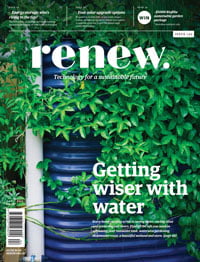Totally Renewable Yackandandah
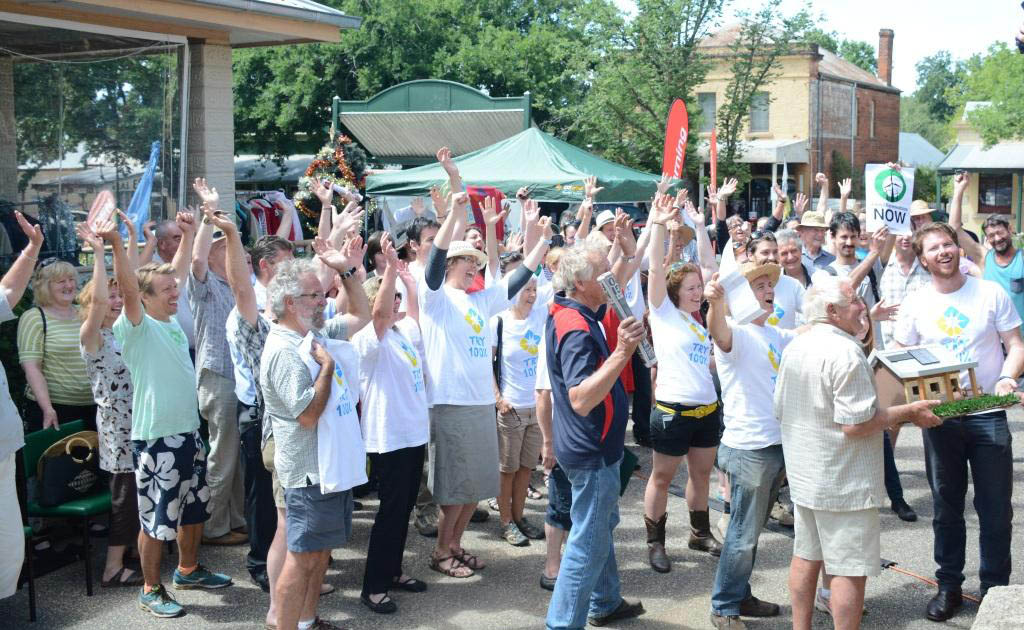
TRY is leading the way with a plan to be 100% renewable by 2022. Here’s what they’ve done so far and the exciting developments about to happen in Yack.
This article is based on a presentation given by Matthew Charles-Jones from TRY at a recent Renew Melbourne branch meeting and was first published in Issue 145 (Oct-Dec 2018) of Renew magazine.
Like lots of country towns, Yackandandah in north-east Victoria is quite creative, innovative and self-sufficient. “People are prepared to get in and make things happen,” says local Matthew Charles-Jones. Totally Renewable Yackandandah, with the neat acronym of TRY, is perhaps just the latest example of that.
TRY’s goal is simple to state: 100% renewable by 2022. This is gross 100%—that is, the plan is for all electricity the town uses to be generated locally. It’s simple to state, but not quite so simple to do, of course.
Matthew says, “We knew right from the start that some people wouldn’t buy into the idea, but we aim to generate enough energy to cover their needs as well.”
After the local council ran a study in 2014 into the renewables resources in the area (wind, solar, hydro and other less common resources), it was clear that renewables provided an enormous opportunity. But, Matthew notes, “it required a little bit of thought as to what to do with that knowledge.” A meeting to discuss the options at the local hall drew a full house, and out of that came a group of 30 enthusiasts, which then became TRY.
Because it wasn’t yet an “ambition owned by the town”, the TRY core group spent about 18 months talking about it: running meetings, setting up a table at the farmers market or out the front of the newsagent and supermarket, and presenting at local garden or Lions clubs. “We were telling our story, normalising what we were talking about and offering the perspective that community energy and 100% renewables is already happening in other parts of the world, even if not here in Australia,” says Matthew.
The first changes begin
Their next step was to think about who in the town was using a lot of electricity.
First cab off the rank was Yackandandah Health, a community-owned hospital and aged care facility. TRY attended a board meeting and floated the idea about what TRY intended to do. “We talked to them about changing light globes and improving thermal performance, and gave them information on contractors for solar. But we left feeling a bit silly as we didn’t have a plan ready,” says Matthew.
Yet just six months later they heard back from Yackandandah Health, who were just about to sign up for 99 kW of solar on their roof and were changing all their lighting to LED. As Matthew says, “Sometimes all it takes is planting an idea, and then a bit of time.”
Yackandandah Health’s solar system was installed in February 2016 and they’ve since halved their power bill. In a fantastic illustration of how renewables can help the community, the $35,000/year they’ve saved has been spent keeping the doors open at a GP service that was about to close. They’re also expanding into other building developments, to provide “innovative housing that suits older folks, but also young families, and professionals, a diverse mix of people in well-thought-through housing that’s energy efficient and has solar.” They’ve also rethought waste streams and the way they’re using gas. “It’s an interesting transition underway there,” says Matthew.
Another organisation that TRY knew they needed to talk to was North East Water, a large electricity user in the area. By 2050, all water authorities across Victoria must deliver their water services with a zero carbon footprint, so NE Water was interested. But again, they weren’t quite sure what TRY could offer. “We went to the managing director’s office and sat down and told them about our lovely plan, still with no idea how to achieve it, and once again we walked away feeling a bit silly,” says Matthew.
But again, it seems they’d planted a seed. About nine months later, they got a call from the operations manager to say that NE Water had just started working with the Intelligent Water Network, an organisation setup to test and evaluate water-supply innovations. And the result: in 2017, NE Water installed 40 kW of solar and 43 kWh of batteries and implemented energy-saving activities such as changing to soft-start pumps and replacing an old air compressor with valve control. This energy efficiency work meant they could install a much smaller solar+battery system than they’d originally forecast, costing them just $180k, compared to a forecast $400k to $500k. That solar+battery system now covers the electricity needs of close to nine months of the year for the area’s potable water supply. And work is now underway to test innovations such as floating solar and inline micro-hydro generation.
Solar bulk buys
Other good news stories are in solar and hot water bulk buys. In 2017, in partnership with Mondo Power, TRY ran a solar bulk buy over an area that’s home to about 2225 people. 125 households participated in a bulk buy of 550 kW of solar, with about 14 households also getting a total of 100 kWh of batteries.
Hot water is a large electricity user as the shire doesn’t have access to natural gas: for many homes, hot water accounts for 40% of electricity use. They’re currently in the process of running a solar hot water bulk buy using Apricus systems, with about 40 likely to be installed, and an intention to expand this across the whole Hume region, including a choice of solar thermal or heat pump.
And it’s been generating employment for ex-coal industry workers: “Some of the hot water tanks are coming out of the Earthworker Coop in Morwell, a terrific cooperative employment arrangement, using boilermakers from the coal industry who are really good at what they do,” says Matthew.
Addressing hot water is a pretty neat win-win in Yack: householders can reduce costs and carbon emissions, and at the same time help alleviate both over- and under-voltage issues that plague the local grid. Over-voltage occurs in the middle of the day, now that all the solar systems are generating, and under-voltage occurs overnight, when the resistive electric hot water systems kick in at 2 am; it’s particularly an issue on the SWER lines often used outside the town. Reducing demand at night from hot water reduces the under-voltage issue and, handily, increases the export capability during the day as well. Matthew explains: “The transformers on electricity poles have to be adjusted to allow for the lowest voltage; if we can lift the dip, we can also lift the peak, which means more capability to export solar generation.”
They’ve also created a fund, initially intended to provide loans to community groups for energy efficiency work and solar. However, they found that struggling community groups weren’t willing to take on debt, so they’ve provided the money as grants instead. They’ve upgraded to LEDs on all public halls around Yackandandah, local community buildings like the swimming pool and museum now have solar and the local cricket ground has switched their high bays to LEDs and used a load monitoring device that helped them work out loads they could switch off, reducing their electricity costs by 30%.
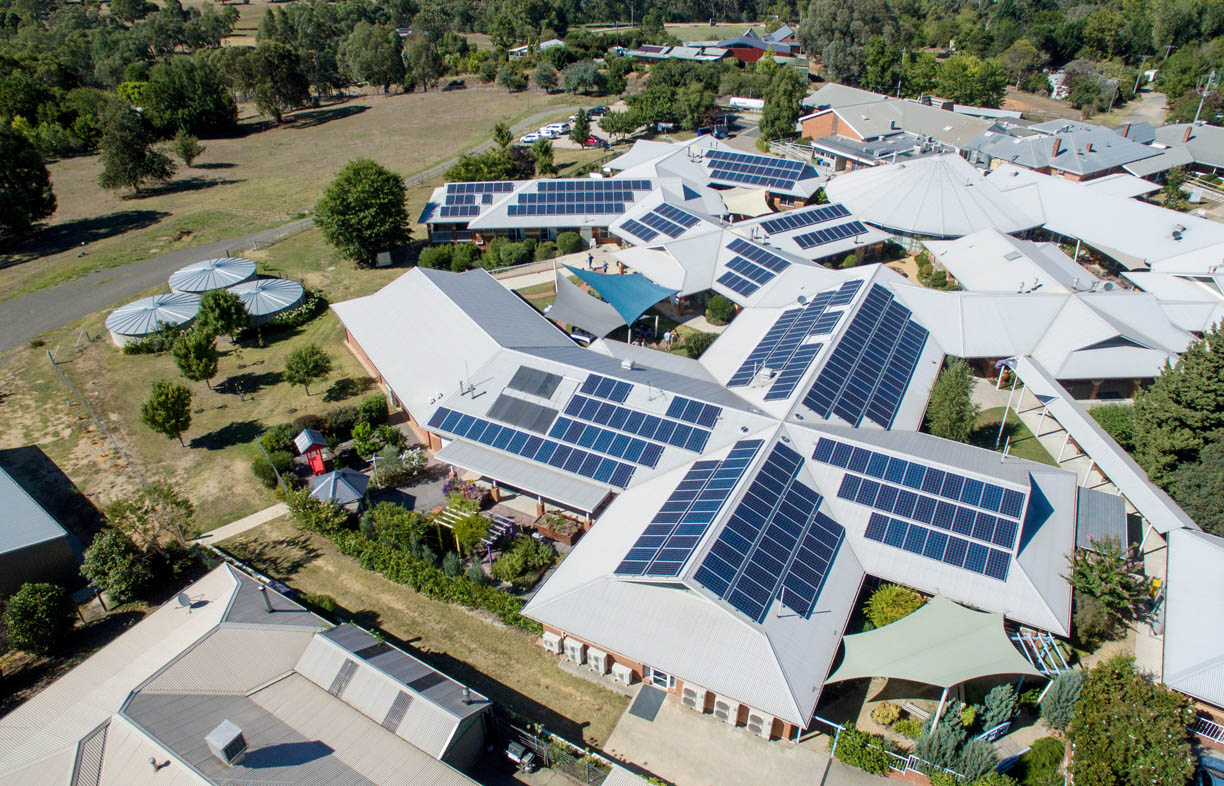
Distributor on board
AusNet Services, the local energy distributor, has been crucial to the 100% goal. Initially, there was a bit of “scratching of heads” about TRY’s plans, but they could see there was a dramatic change happening in the market—”you and I were installing solar panels, reducing energy use with smart appliances and installing batteries, and they knew that they needed to be involved to create value out of their existing grid assets,” says Matthew.
Mondo Power has worked closely with TRY in their renewable energy journey. One thing that came out of that has been the Ubi, a microcomputer developed by Mondo Power that monitors electricity usage, generation, export and battery storage, and can control circuits in the house remotely via wi-fi, 3G or 4G. The Ubi is also demand-response enabled, for remote control of such devices as pool pumps, fridges and air conditioning. It’s a critical part of the picture for Yackandandah. In the first instance, it’s giving them a more complete picture of energy use and generation in participating households. Down the track, its demand-response capabilities and potential use in a local mini grid will become key.
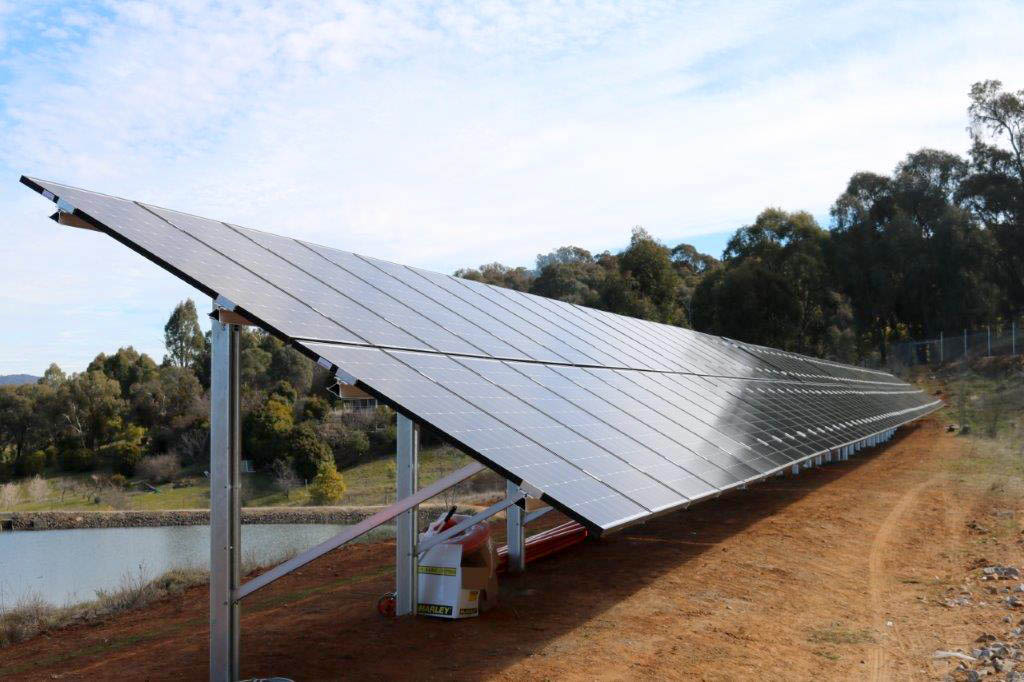
The plan crystallises
It seems the group can stop “feeling silly” about the lack of a plan. After a series of focus groups in Yackandandah and meetings with experts in the field, the end result has been a five-stage roadmap (see Figure 1). Currently they’re at stage 2 (solar installs with Ubi monitoring) and heading into stage 3, with some battery deployment. They’ve also just started working on stage 4, which will provide a community energy retailer and the chance for them to develop a community-wide mini grid; the plan is for the retailer to start trading in February 2019. And the initial parts of stage 5, working out the finances for a large solar farm, are happening too.
They anticipate that by 2020, they’ll be ‘net’ 100% renewable, with the addition of a solar farm that’s big enough to cover the volume of energy used in the town—that is, they’ll be covering all their energy use with generation, but still importing energy from outside at certain times. By 2022, the aim is to be ‘gross’ 100%, with all electricity generated locally. A big part of that will be adding local energy storage, but also reducing energy demand by, say, 30%: “If hot water uses 40% of energy demand in a house and we can bring that down to 5%, that will make a huge difference,” says Matthew.
The group is often asked whether they’re contemplating wind power. “It could be in the mix, but there’s not a great wind resource locally,” says Matthew.
He adds: “The scale of change needed to respond to the need to decarbonise is huge; it needs change at all levels: in government, business, industry and civil society.” As a result, TRY has tried hard to be apolitical. They’ve been fortunate in having Cathy McGowan as federal member for Indi, who’s been a strong supporter of community energy and has worked hard to bring people together. And Mondo Power has recently applied to the Regional Growth Fund for $24 m to build clusters of renewable energy activity across the Hume region—which could be a game-changer.
There’s big thinking still to come, says Matthew, including how this can apply across the whole region and how to resolve conflicts in land use between farms and solar. But the work so far has already seen many changes in energy use in this community. Will they meet 100% gross by 2022? Who knows, but they will certainly be further along that path.
Even though Yackandandah is a town of just 950, what they’re doing has managed to influence thinking at a regional level. Matthew says, “It’s been a real privilege being involved, and what we’ve witnessed is a real yearning to reform the way we live in the natural world.”
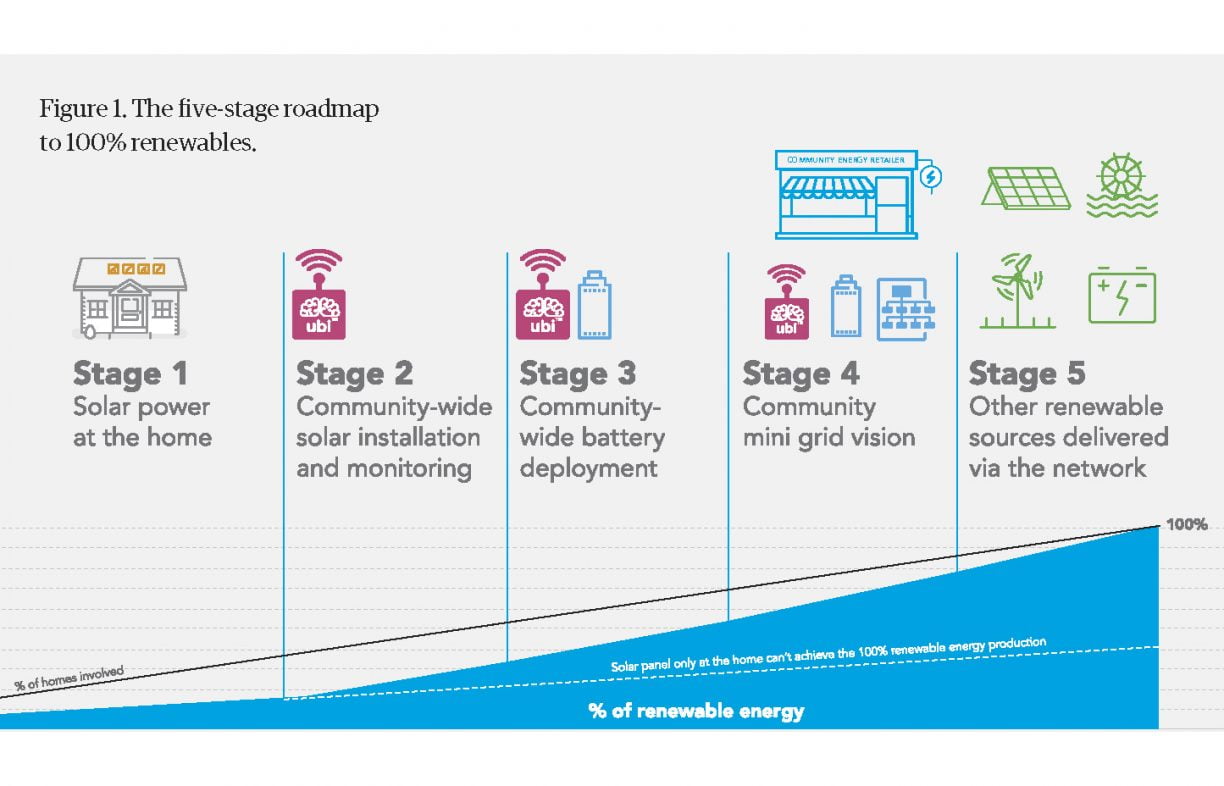
Ubi and the mini grid
When multiple homes or businesses in an area have an Ubi installed, these systems can form a network to communicate with one another and enable a range of functionality, including establishing and tracking community renewable energy targets, comparing each home’s energy use and renewable energy generation to the greater community, and providing the ability to trade energy locally (to be enabled via the community energy retailer TRY is starting up, says Matthew).
The homes and businesses in the mini grid can have either just solar or solar and batteries. Even non-solar homes can participate as consumers of locally generated clean energy.
Surplus energy generated in the mini grid can be shared among participants in the mini grid, sold back to the mains grid or even donated to a school, charity or other community organisation.
For more info, watch the video at: mondopower.com.au/yack.
This article was first published in Issue 145 (Oct-Dec 2018) of Renew magazine. Issue 145 has saving water as its focus.
Recent articles
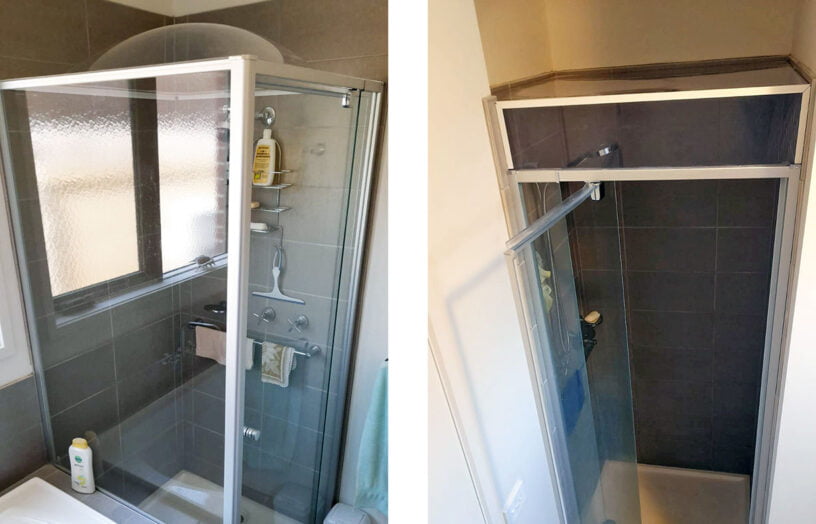 Efficient homes
Efficient homes
Ditching the shower fan
By fitting a lid on the shower, exhaust fans are not needed when showering. John Rogers describes this simple retrofit, using both a commercial product and a great looking DIY version.
Read more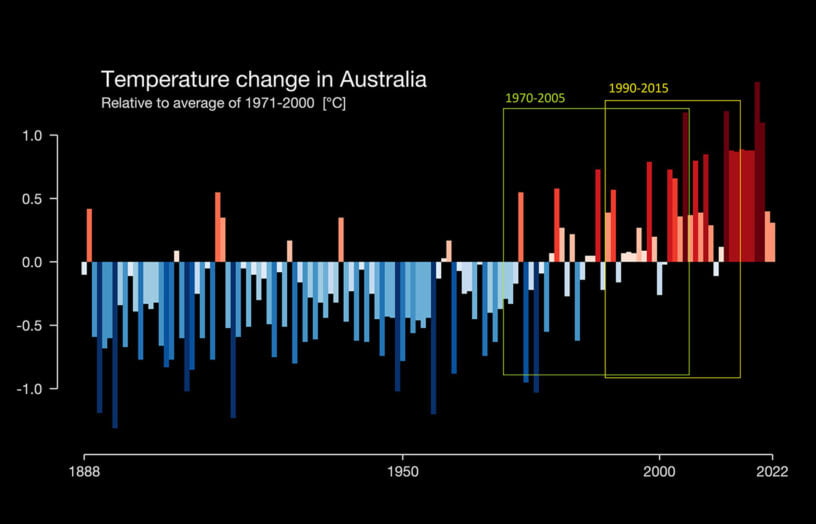 Efficient homes
Efficient homes
Building for a changing climate
Are we building homes for the future, or for the past? Rob McLeod investigates how climate change is impacting home energy ratings and the way we build our homes.
Read more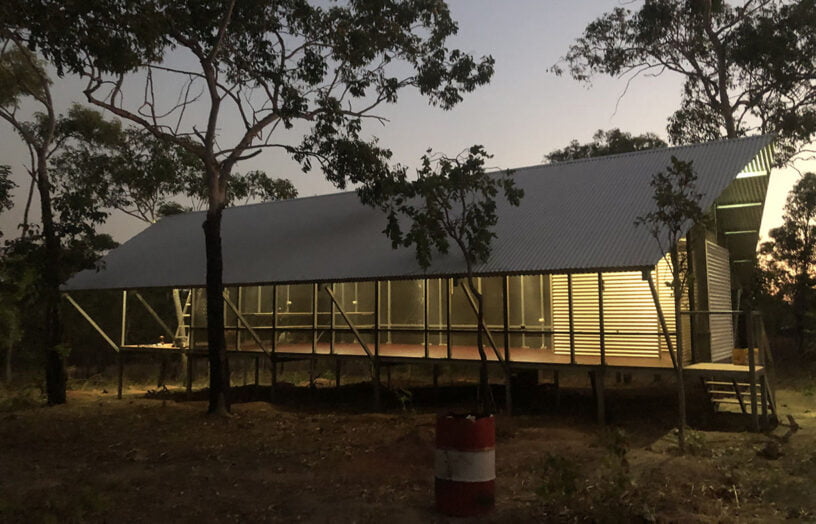 Efficient homes
Efficient homes
Remote communities leading the charge
We learn about four sustainability and renewable energy projects in remote Australia.
Read more

